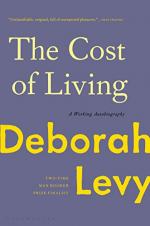
|
| Name: _________________________ | Period: ___________________ |
This test consists of 5 short answer questions, 10 short essay questions, and 1 (of 3) essay topics.
Short Answer Questions
1. In Chapter Five: Body Electric, what does Deborah say she thought she was doing?
2. In Chapter Six: The Body Electric, who does Deborah say the man she met at the party reminded her of?
3. In Chapter Four: Living in Yellow, where was the apartment Deborah says she moved to?
4. In Chapter Two: The Tempest, who does Deborah say she met at a funeral?
5. In Chapter One: The Big Silver, what does Deborah say the English woman was doing?
Short Essay Questions
1. In Chapter Four: Living in Yellow, what does Deborah write about her supporting her family in this time? What does she say about her freedom?
2. In Chapter One: The Big Silver, who does Deborah say was named "Big Silver"? Why was he called this?
3. In Chapter Two: The Tempest, how does Deborah apply the Big Silver metaphor to herself? How does she say she applied it to in her own life?
4. In Chapter Three: Nets, what does Deborah say holds together the family home? What does Deborah say is the disintegration of this story?
5. In Chapter Five: Gravity, how does Deborah say she set up her shed? What did she furnish it with?
6. In Chapter Three: Nets, what does Deborah say she and her ex-husband did to the family home? What did this action send her back to?
7. In Chapter Two: The Tempest, what did Deborah say she noticed about her male friends and colleagues? What did this lead her to question?
8. In Chapter One: The Big Silver, what does Deborah Levy say she wrote about the Big Silver conversation after she witnessed it? What does she say she thought about the young woman?
9. In Chapter Two: The Tempest, what does Deborah say she had seen in Brazil? How had she applied this to her divorcee life?
10. In Chapter Six: The Body Electric, what metaphor from earlier in the book did Deborah apply to the party she went to? How did she apply this metaphor to women?
Essay Topics
Write an essay for ONE of the following topics:
Essay Topic 1
In many interactions in the autobiography that Deborah notices, from Big Silver in the beginning and another Big Silver in the middle, to the man taking up the table in the Eurostar, men take up a space that women do not, or have to try to, exist in. How does Deborah's observations of this tie to her discussion of being a minor or major character? How are these experiences of suppression similar or different than what Deborah's mother or other older generations would have experienced? Why do you think these experiences still occur in such away still in a modern sense?
Tie this discussion to outside research into microaggressions and the continued struggle for equality. What do these observations show about how a societal struggle evolves and sticks over time? Consider this also thinking about the idea of composition and recomposition. Is a new story being written? Or is an old story being recomposed with different lines?
Essay Topic 2
Deborah Levy begins her autobiography:
"As Orson Welles told us, if we want a happy ending, it depends on where we stop the story" (1).
Why do you think this is the first line of the autobiography? And how does the ending of the book tie into the idea of a happy ending, or an ending where the story stops? How does happiness, in life, in ending, in grieving and death, tie into the autobiography?
Essay Topic 3
Throughout the autobiography, Deborah Levy discusses the breaking of the patriarchy's story by women and the consequences they may subsequently face. Turn to page 133. Levy writes:
"There are plenty of tears, but it is better to walk through the bluish and blackish darkness than reach for those worthless jewels" (133).
What is the bluish and blackish darkness that Levy writes about here? Use Levy and two other women mentioned in the autobiography to discuss what this darkness is, and how, finding their way, these women walk through it to the other side.
|
This section contains 1,142 words (approx. 4 pages at 300 words per page) |

|




